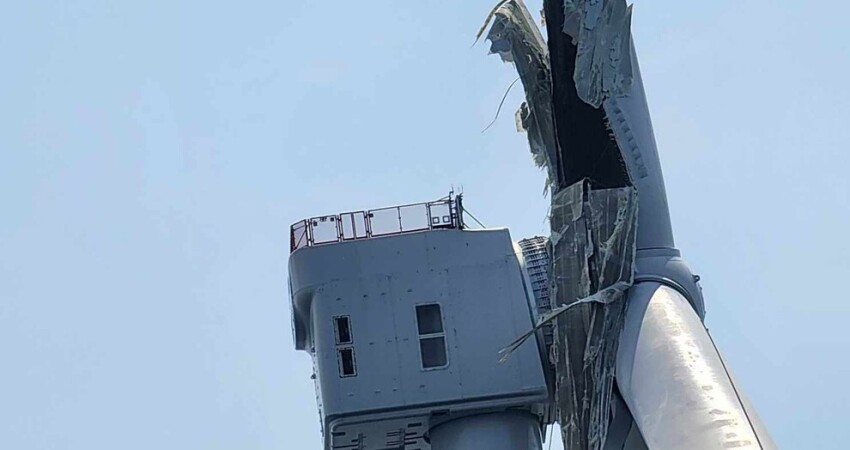Offshore turbine manufacturer GE Vernova says it is removing some previously installed Haliade-X turbine blades from the Vineyard Wind array, after finding they have a “manufacturing deviation” similar to one that fractured in July.
In a statement Wednesday, the company said, “Out of an abundance of caution, GE Vernova intends to remove some blades from the Vineyard Wind farm while strengthening other blades as needed to support the safety and operational readiness of this project.”
Construction on the 804-megawatt project off southern New England halted after the blade failure July 13, as the developers, GE Vernova and the federal Bureau of Safety and Environmental Enforcement investigated.
BSEE allowed some work to resume in mid-August, and eight new towers and nacelles have been installed since.
During a third-quarter earnings call for analysts and investors Wednesday morning, GE Vernova CEO Scott Strazik said the company has found that a “low single-digit proportion of our manufactured blades…had a manufacturing deviation similar to the blade that we experienced the failure at Vineyard Wind."
The defective blade was produced at the LM Wind Power plant a at Gaspé, Quebec, and apparently had “insufficient bonding” of its materials, according to GE Vernova. After the accident GE Vernova undertook an extensive review of ultrasound imaging of turbine blades and internal inspections using remote controlled crawler drones.
The heavy load carrier Rolldock Sun departed New Bedford in early October and arrived at Chebourg, France, Oct. 18, carrying turbine blades, according to U.S. and French media reports. GE Vernova operates a factory and produces blades at the French port.
The July 13 failure sent fiberglass and resin debris into the sea and drifting up for weeks on southern New England beaches. The cleanup continued over the past week as the offshore service vessel HOS Mystique recovered larger pieces of debris from the sea floor.
In a Sept. 27 order, BSEE directed Vineyard Wind to “conduct a site-specific study that evaluates the environmental harm and other potential damage” from the July 13 accident. The study must address “the subsea debris field resulting from the blade failure and the potential impacts or damage to onshore, coastal, and offshore resources from the blade debris,” the agency said.
In a statement Wednesday Vineyard Wind and GE Vernova said BSEE had “granted approval to return to installing new blades on turbines at the project once stringent safety and operational conditions are met. The companies will continue to make progress on these elements in upcoming weeks prior to installation.”
“As GE Vernova and Vineyard Wind focus on these critical pathways, the final step in the action plan – operations and power production – will resume only after additional progress is made and all requisite approvals are granted.”







